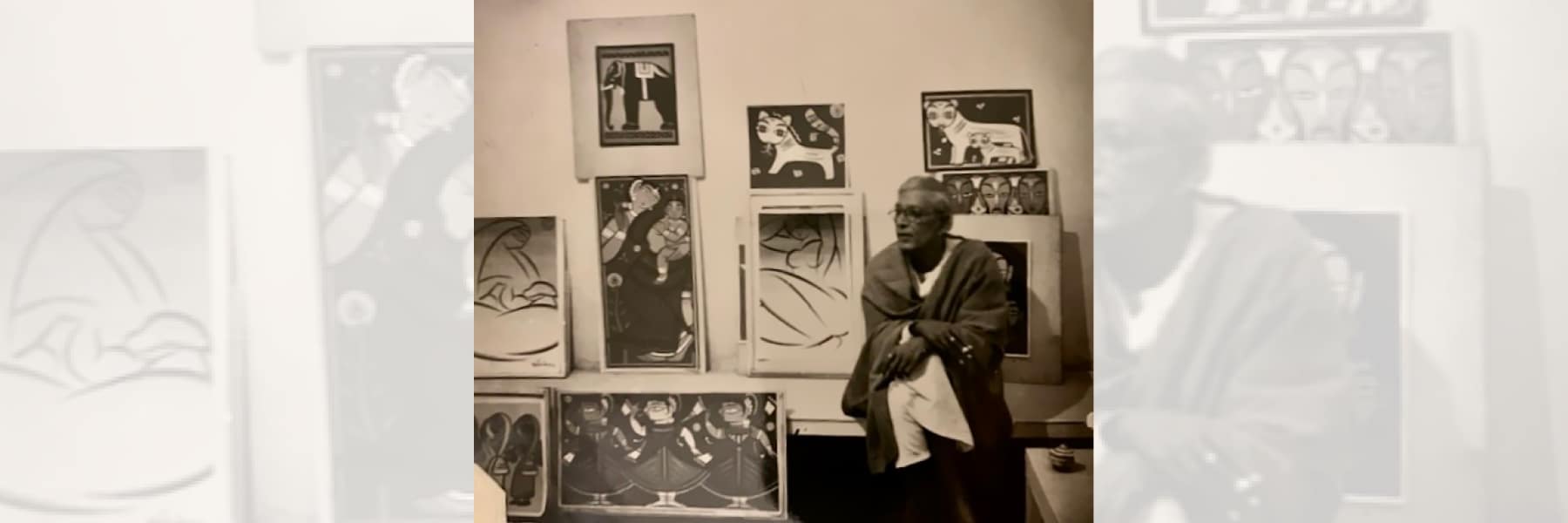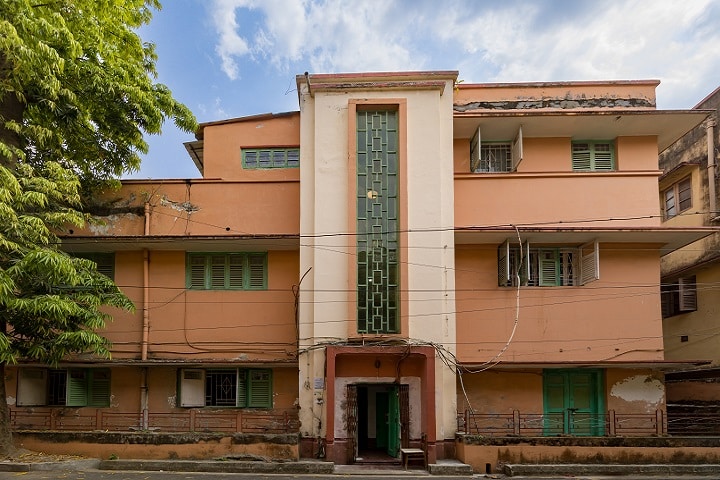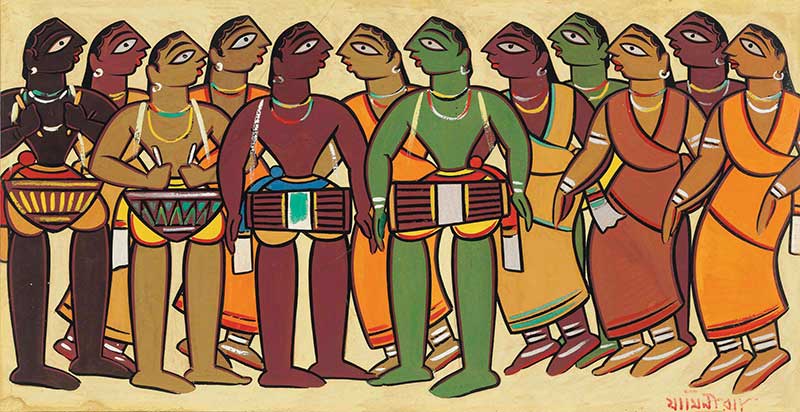
MASTER MOSHAI: JAMINI ROY'S STUDENT REMEMBERS HIS TEACHER
As one of India’s most iconic artists as well as one of the Nine ‘National Treasures,’ I have known about Jamini Roy as an artist for many years and observed how many generations of clients appreciate his works. As I continue to learn more and more about Jamini Roy as a person, I have developed even more regard and respect for him. He trained in the European school of art, but he had the courage to break away from those stylistic rules and return to his Bengali roots, to create art that truly spoke to him and to the public.
Recently, one of my dear friends Devashish was reflecting on growing up in Kolkata and having Jamini Roy as his neighbor and first art teacher. I was inspired by his story and asked if he would write about his memories of Jamini, which are not only an incredibly precious personal experience but also an important piece of cultural history.
I am delighted to share Devashish’s first hand account of Jamini Roy as a teacher below — I was particularly struck by his description of Kolkata, a place that seems to still embody Jamini’s own values about art. Even today in the city, art is integrated into daily interactions, from music and song to weaving and drawing, rather than treated as something separate from life. And, what Devashish has written about staying true to one’s roots, as well as taking time to ‘smell the roses,’ deeply resonated with me, especially in the context of the pace of life in Silicon Valley, where I live.

Master Moshai: Jamini Roy, the Teacher
by Devashish Sarkar
Growing up in Kolkata during the 1960s and 70s was like living inside an ever-evolving painting. The city was undergoing massive change, yet there remained pockets of timeless gentleness, filled with art, music and literature. A cherished part of my childhood was spent in one such pocket. I was a student — perhaps the last student — of artist Jamini Roy.
Master Moshai, as I affectionately called him, was our next-door neighbor in Ballygunge Place. When we started, I was 6, and he was 80. He had a lifetime of artistic creation behind him and was famous all over the world for his distinctive style, one that seamlessly blended traditional Indian techniques with a modern narrative. To the world, he was an icon, but to me, he was a gentle and sophisticated grandfatherly figure, stern and serious when I made a mistake, but there was a hint of mischief always lurking behind his glasses.
For around four years, every day after school, I’d walk over to his house. His front room was filled with warm, diffused light, canvases strewn everywhere, and the pleasant smell of paints and turpentine. Those days, birds still chirped in the afternoon in Kolkata, and sometimes he would ask me to just sit silently and listen. At other times, he would talk about the brush being an extension of the hand and the eye, and the mind that harmonized both of them. And he would ask me what I saw, what I felt, when I bicycled to school, walked to Dover Lane to buy stamps for my collection with my pocket money, or when I helped my grandmother water the plants in our garden.

Master Moshai was from Bankura, a region with a long civilizational heritage. It is said that the Dhruvapada — the dhrupad — was first developed by Bankura musicians thousands of years ago. The local artists unified the soil and the elements of nature with their creative eye and hand, and created the unique Bankura style of pottery, sculpture and architecture. The ancient history, symbols and icons of India live on in the region’s Balucheri sari.
Master Moshai often spoke of the importance of rooting oneself in one’s own culture. “To understand the world, you must first understand yourself and where you come from,” he would say. He believed that true art was born when one’s personal experiences intersected with the world’s vast expanse.
Master Moshai taught me not just artistic techniques but the philosophy behind art. He introduced me to the world of Kalighat paintings and explained the beauty inherent in simplicity. We’d often paint together, and he would demonstrate how to create his signature bold strokes, or how to mix colors to achieve the perfect tones one finds in nature.
Some of my fondest memories surround our trips around Kolkata in his black Morris Minor car. He’d take me to the ghats of the Ganga, the bustling sidewalks of College Street or the quiet stretches of lawns around the Victoria Memorial. Everywhere we went, he’d teach me to observe — the colors, the people, the stories. He believed that every corner of Kolkata had a tale to tell, and through art, we could give it a voice.
One day, as we were walking by the Hooghly River, watching the boats sail and the sun setting, he pointed towards the horizon and said, “Life, like this river, is constantly moving, and change is its only constant. But remember, in this ever-changing world, stay true to your roots, your art, and your soul. That is where real painting is born.”
His words were not limited to art alone. Master Moshai went beyond the canvas. He taught me about passion and the pursuit of genuine happiness. He exemplified the notion that one’s work wasn’t just a profession but an extension of oneself.
As the years went by, Kolkata transformed. The gentle rhythm of the city slowly gave way to the rapid beat of relentless construction and ever increasing population. But inside Master Moshai’s house, time seemed to stand still. Every stroke, every color, every canvas was a testament to a man and his world view, one so deeply ancient, as ancient as India itself, yet also so thoroughly modern and global.
Master Moshai breathed his last when I was around 11. Today, 50 years later, I realize how privileged I was to have known him, to have been a part of his world, even if for a brief moment in time. He resonates with me even now, and continues to remind me of a Kolkata that once was — gentle, artistic and profoundly beautiful.

Leave a Reply
You must be logged in to post a comment.